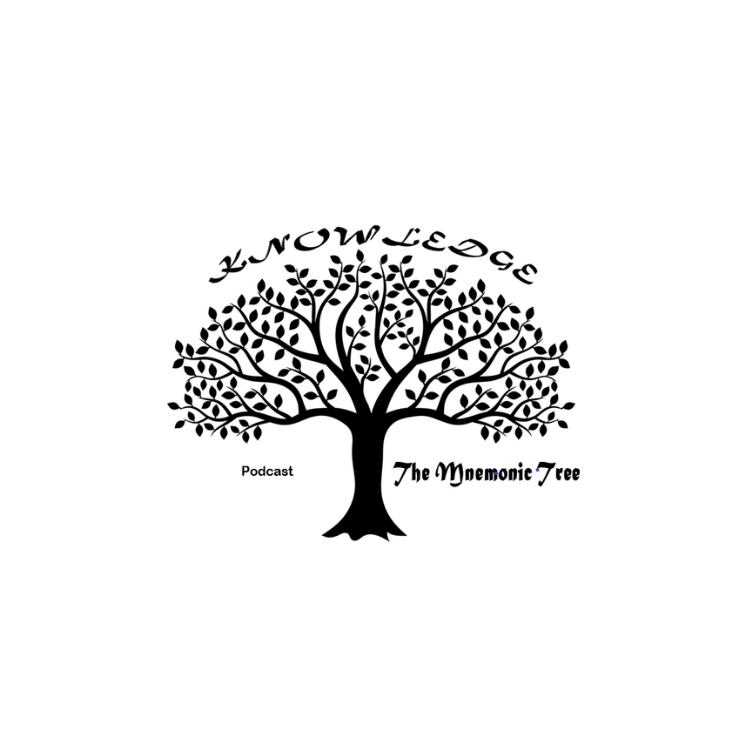Ep. 31: The Great Lakes of North America Mnemonic
Intro
Hello and Welcome to this episode of the podcast, "The Mnemonic Tree", where we add a single mnemonic leaf to our Tree of Knowledge.
Today's episode will be on Americas and Canadas Great Lakes. And it wasn’t until I took a really good look on the map that I realised just how big and great they are!
A group of five interconnected freshwater lakes they lye on the border between the United States and Canada and provide North America with approximately 84% of its total surface fresh water.
Todays mnemonic is on the five great Lakes of North America.
With that being said, we will begin with a summary from Wikipedia.
Wikipedia Summary
The Great Lakes, also called the Great Lakes of North America, are a series of large interconnected freshwater lakes in the east-central interior of North America that connect to the Atlantic Ocean via the Saint Lawrence River. The five lakes are Superior, Michigan, Huron, Erie, and Ontario and they are in general on or near the Canada–United States border. Hydrologically, Michigan and Huron are a single body of water joined at the Straits of Mackinac. The Great Lakes Waterway enables modern travel and shipping by water among the lakes.
The Great Lakes are the largest group of freshwater lakes on Earth by total area and are second-largest by total volume, containing 21% of the world's surface fresh water by volume.[1][2][3] The total surface is 94,250 square miles (244,106 km2), and the total volume (measured at the low water datum) is 5,439 cubic miles (22,671 km3),[4] slightly less than the volume of Lake Baikal (5,666 cu mi or 23,615 km3, 22–23% of the world's surface fresh water). Because of their sea-like characteristics, such as rolling waves, sustained winds, strong currents, great depths, and distant horizons, the five Great Lakes have long been called inland seas.[5] Depending on how it is measured, by surface area, either Lake Superior or Lake Michigan-Huron is the second-largest lake in the world and the largest freshwater lake. Lake Michigan is the largest lake that is entirely within one country.[6][7][8][9]
The Great Lakes began to form at the end of the Last Glacial Period around 14,000 years ago, as retreating ice sheets exposed the basins they had carved into the land, which then filled with meltwater.[10] The lakes have been a major source for transportation, migration, trade, and fishing, serving as a habitat to many aquatic species in a region with much biodiversity. The surrounding region is called the Great Lakes region, which includes the Great Lakes Megalopolis.[11]
Extracted from: [https://en.wikipedia.org/wiki/Great_Lakes]
Mnemonic
The Great Lakes of North America Mnemonic – HOMES
(Picture a giant home centred on each of the five lakes. Start in centre, then go from east to west, then south to north)
1. Lake Huron - Centre
2. Lake Ontario - East
3. Lake Michigan - West
4. Lake Erie - South
5. Lake Superior - North
Five Fun Facts
1. The Great Lakes hold 21% of the world’s surface fresh water.
2. Lake Michigan’s shore is home to the largest freshwater sand dunes in the world. The highest dune is around 450 feet in height at Sleeping Bear.
3. The Great Lakes are the largest freshwater system in the world. They are all connected and span 94,600 square miles.
4. The Great Lakes Region is the primary water source for more than 40 million people.
5. Lake Michigan has its own “Bermuda Like Triangle”. Apparently, planes and ships have mysteriously gone missing in this area, whilst the intrigue is augmented by an unusual Stonehenge-like rock formation, which lies below the lake’s surface.
Three Question Quiz
Q.1. Which great lake is the largest freshwater lake in the world by surface area?
Q.2. Which great lake is the only lake entirely within US territory?
Q.3. How were The Great Lakes formed? Options are earthquakes, Asteroids or Glaciers
Bonus Q. How many islands are there in The Great Lakes? Options are 350, 3,500 or 35,000
Bonus Q. Why shouldn’t you tell jokes on a frozen lake?
Mnemonic Recap
The Great Lakes of North America Mnemonic – HOMES
(Picture a giant home centred on each of the five lakes. Start in centre, then go from east to west, then south to north)
1. Lake Huron - Centre
2. Lake Ontario - East
3. Lake Michigan - West
4. Lake Erie - South
5. Lake Superior - North
Three Question Quiz Answers
Q.1. Which great lake is the largest freshwater lake in the world by surface area?
A. Lake Superior
Q.2. Which great lake is the only lake entirely within US territory?
A. Lake Michigan
Q.3. How were The Great Lakes formed? Options are earthquakes, Asteroids or Glaciers
A. Glaciers
Bonus Q. How many islands are there in The Great Lakes? Options are 350, 3,500 or 35,000
A. Approximately 35,000
Bonus Q. Why shouldn’t you tell jokes on a frozen lake?
A. It might crack up. And just another thing/titbit about lakes. My Bluetooth speaker wasn’t working and it was absolutely driving me crazy. So much so, I threw it in the lake … … … at least now it’s syncing!
Word of the Week
nubilous
[ noo-buh-luhs ]
adjective
cloudy or foggy.
Example
Due to the nubilous conditions, the sky took on the appearance of the lake.
Extracted from: [https://www.dictionary.com/]
Website: https://www.themnemonictreepodcast.com/
Apple Podcasts: https://podcasts.apple.com/au/podcast/the-mnemonic-tree-podcast/id1591795132
Spotify: https://open.spotify.com/show/3T0LdIJ9PBQMXM3cdKd42Q?si=WQ1SnHo5QgOawX-mxS6yUA
References
https://en.wikipedia.org/wiki/Great_Lakes
https://www.michigan.org/article/trip-idea/great-lakes-fun-facts



